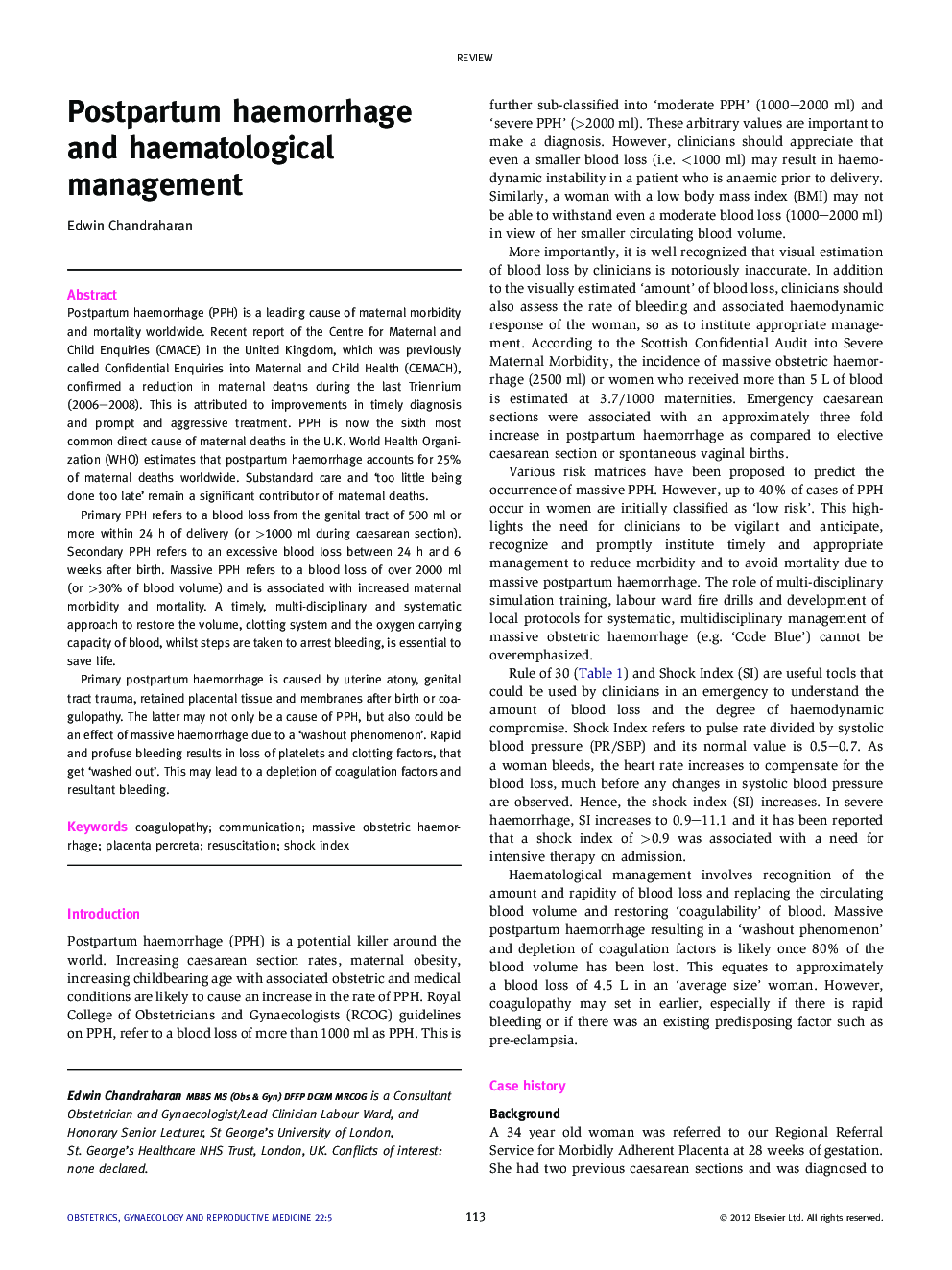| Article ID | Journal | Published Year | Pages | File Type |
|---|---|---|---|---|
| 3967090 | Obstetrics, Gynaecology & Reproductive Medicine | 2012 | 5 Pages |
Postpartum haemorrhage (PPH) is a leading cause of maternal morbidity and mortality worldwide. Recent report of the Centre for Maternal and Child Enquiries (CMACE) in the United Kingdom, which was previously called Confidential Enquiries into Maternal and Child Health (CEMACH), confirmed a reduction in maternal deaths during the last Triennium (2006–2008). This is attributed to improvements in timely diagnosis and prompt and aggressive treatment. PPH is now the sixth most common direct cause of maternal deaths in the U.K. World Health Organization (WHO) estimates that postpartum haemorrhage accounts for 25% of maternal deaths worldwide. Substandard care and ‘too little being done too late’ remain a significant contributor of maternal deaths.Primary PPH refers to a blood loss from the genital tract of 500 ml or more within 24 h of delivery (or >1000 ml during caesarean section). Secondary PPH refers to an excessive blood loss between 24 h and 6 weeks after birth. Massive PPH refers to a blood loss of over 2000 ml (or >30% of blood volume) and is associated with increased maternal morbidity and mortality. A timely, multi-disciplinary and systematic approach to restore the volume, clotting system and the oxygen carrying capacity of blood, whilst steps are taken to arrest bleeding, is essential to save life.Primary postpartum haemorrhage is caused by uterine atony, genital tract trauma, retained placental tissue and membranes after birth or coagulopathy. The latter may not only be a cause of PPH, but also could be an effect of massive haemorrhage due to a ‘washout phenomenon’. Rapid and profuse bleeding results in loss of platelets and clotting factors, that get ‘washed out’. This may lead to a depletion of coagulation factors and resultant bleeding.
